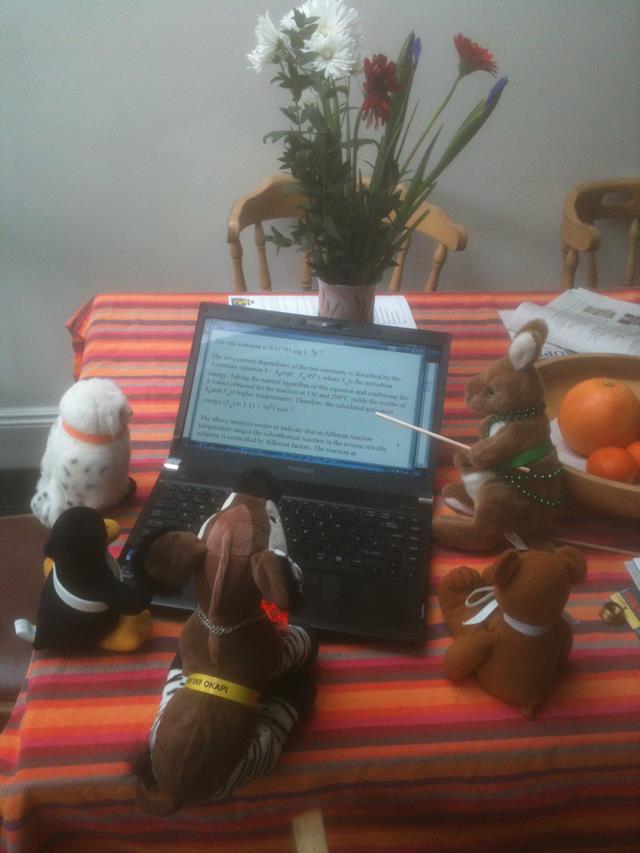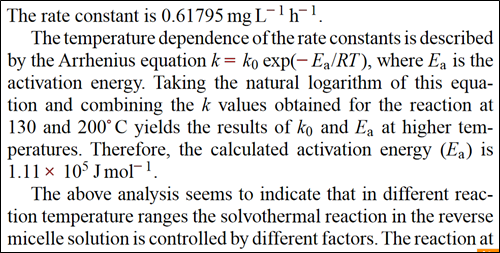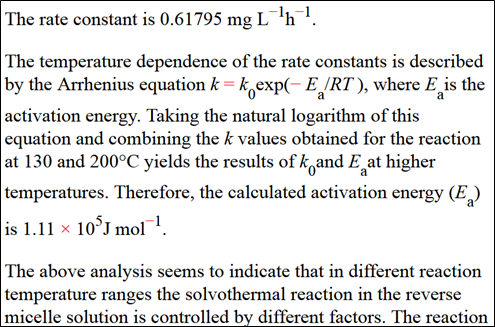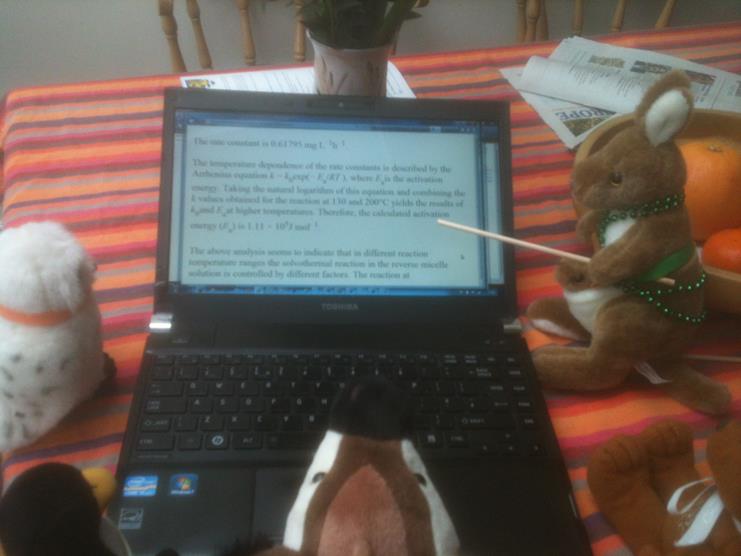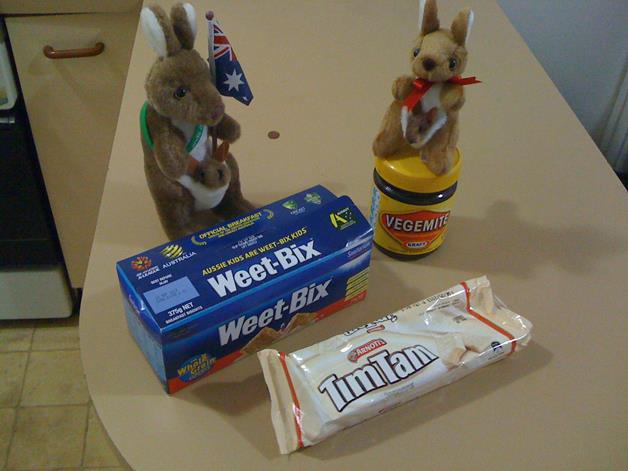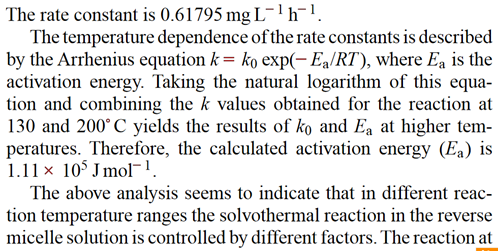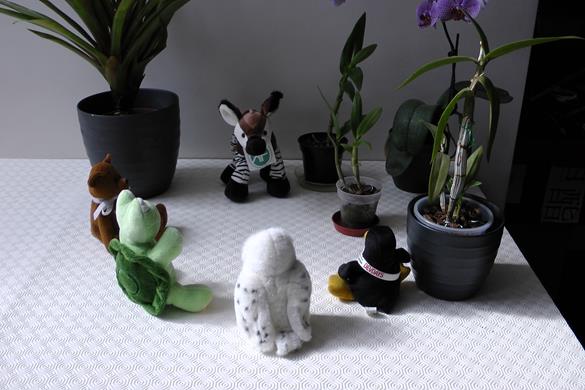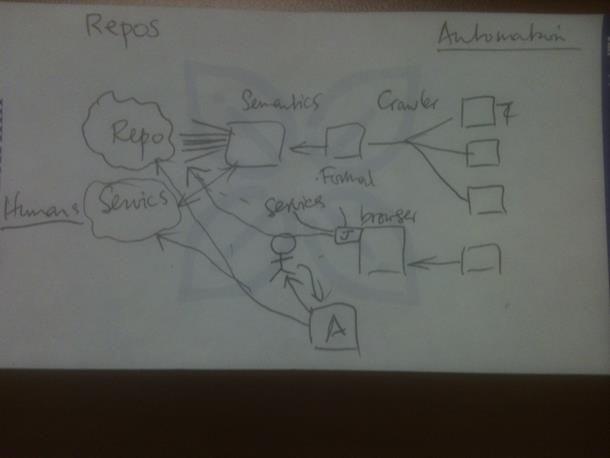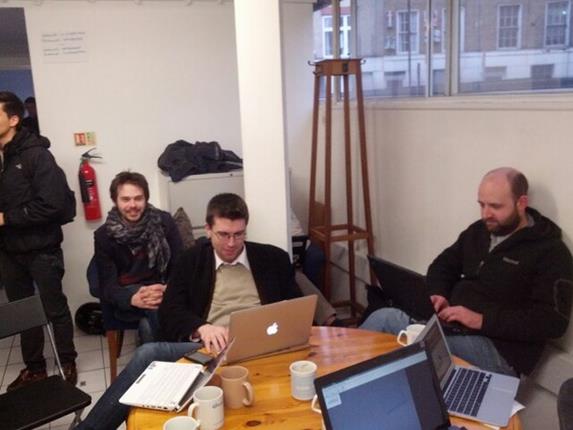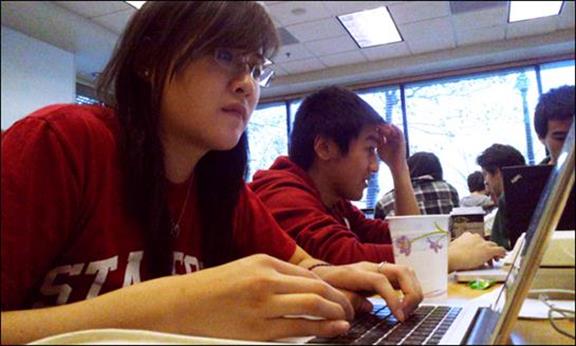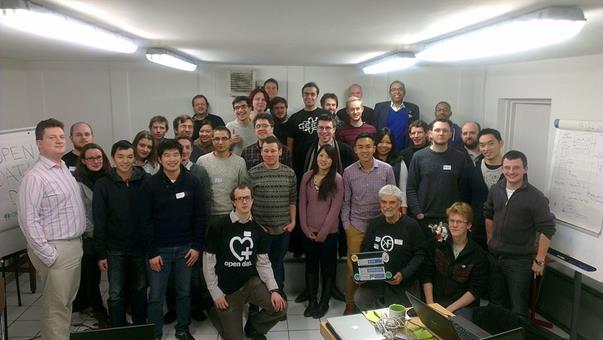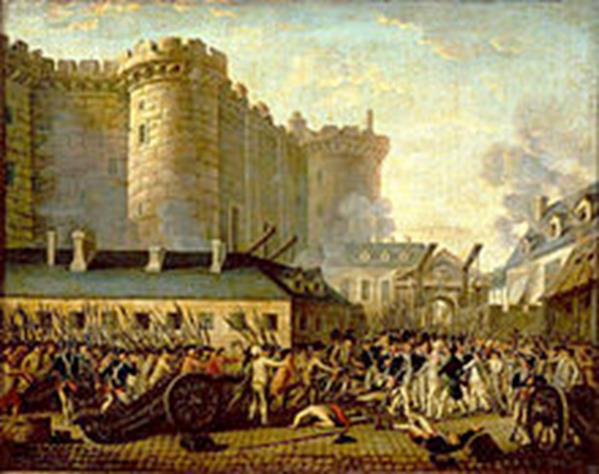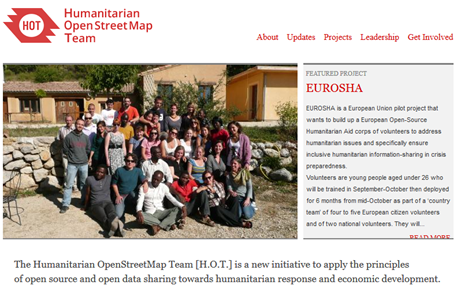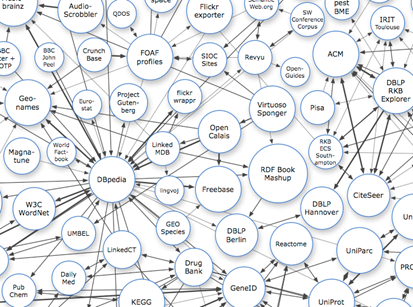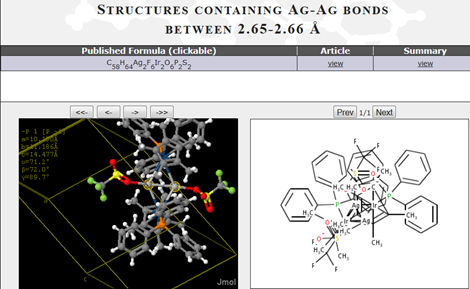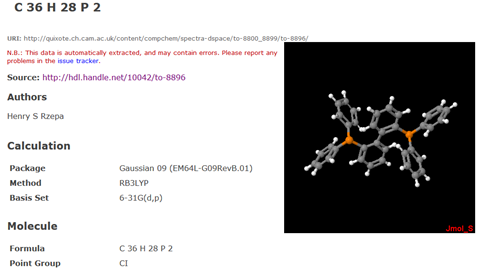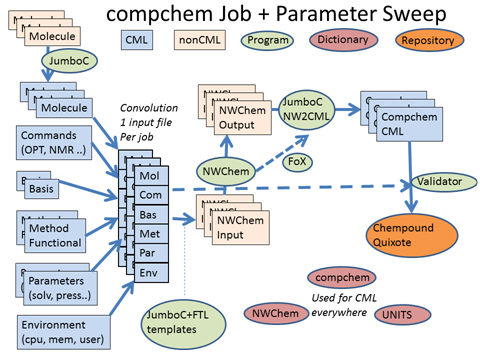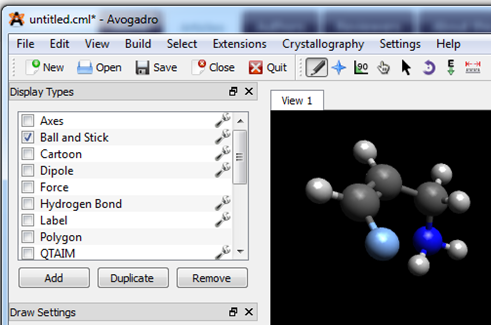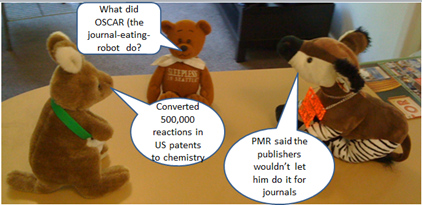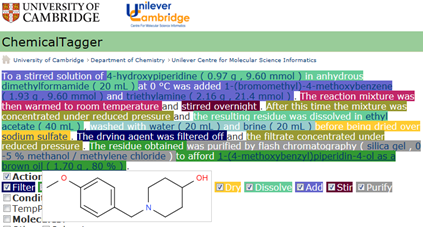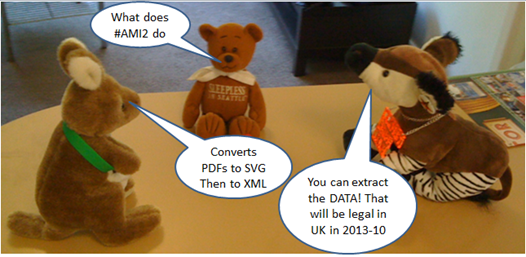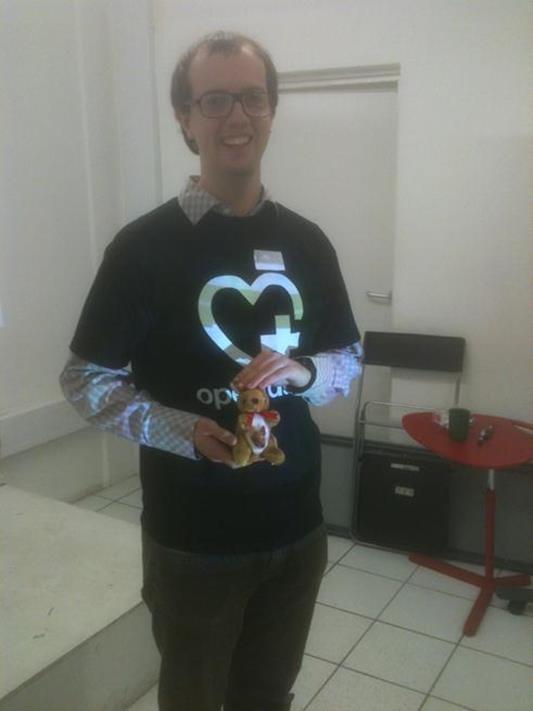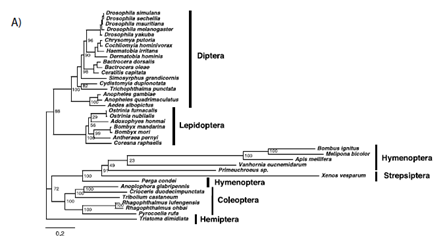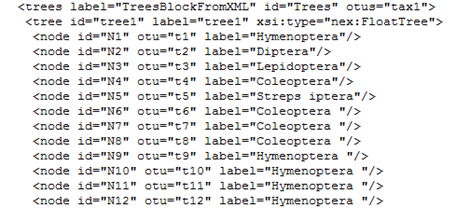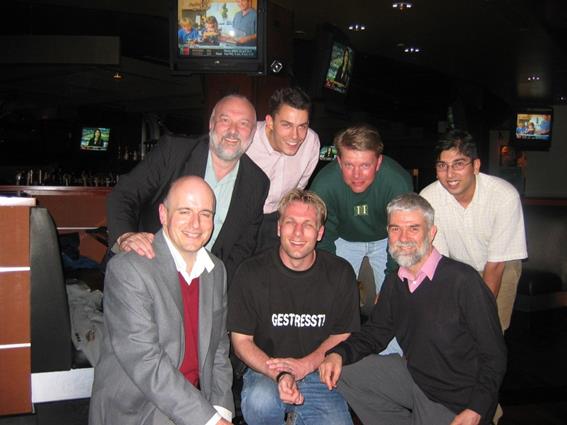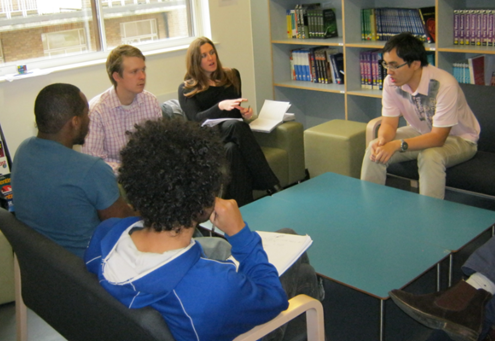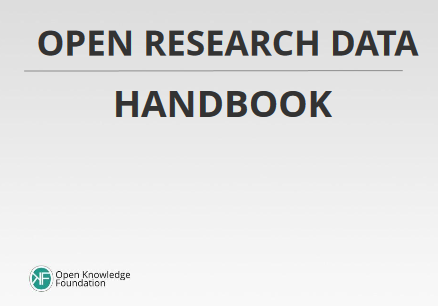#animalgarden like everything that’s Open and especially animals so they were very excited to hear of @thePeerJ and its blue monkey. PeerJ is an Open Access publisher (and PMR thinks it’s a good thing and may publish in it). But not everybody liked the monkey. Here’s Kent Anderson of the #scholarlykitchen http://scholarlykitchen.sspnet.org/2012/05/22/the-risks-of-launching-a-new-services-business-branding-cash-flow-and-the-fraught-start-of-peerj/
The PeerJ branding start isn’t promising … [it] currently has a blue monkey as its branding element … Apparently, the blue monkey’s days are numbered, but this is what we have today. … The problems with the PeerJ brand are obvious and easily fixed. Here’s the prescription:
- No silly blue monkeys.
#animalgarden were upset. It sounded like people didn’t like the monkey. And for many weeks monkey had no name. It’s not easy to be friends with someone with no name. But then @thePeerJ had a name-the-monkey-competition http://blog.peerj.com/post/43649138800/name-the-peerj-monkey . That meant that monkey was going to be permanent. And a few days ago (http://blog.peerj.com/post/44637115411/naming-monkey ) the monkey has a name:
Charlie
Named after Charles Darwin.
That’s tremendous. So #animalgarden had a welcoming party – complete with red carpet:
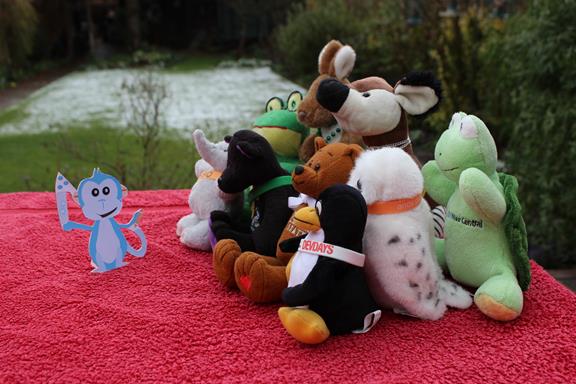
[Photo: Tom Murray-Rust, CC-BY 3.0]
Charlie is a bit overwhelmed. He’s not met three-dimensional animals before and that white stuff in the garden is wet and cold and not very good for cardboard. He hopes PeerJ give him a “proper body” soon.
When they do, #animalgarden can interview him at the Panton Arms as they did with Gulliver Turtle from BioMeCentral.
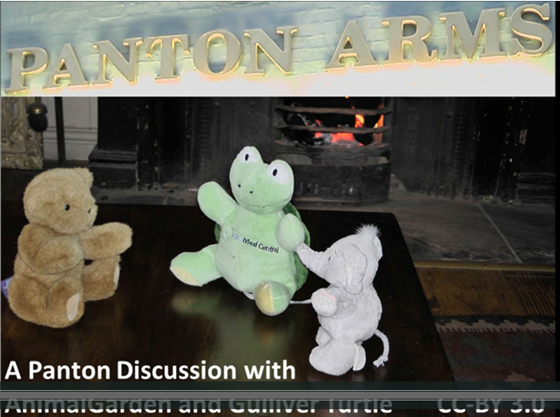
Hear/see interview on http://vimeo.com/34259668. Charlie likes the idea of a fire, but not while he is still cardboard.
And #animalgarden think mascots are very important. Here are some of them:

[Photo: Tom Murray-Rust, CC-BY 3.0]
- 12 o’clock: Tux, Linux penguin
- Chuff, @okfn_okapi
- Sleepless: (from Seattle)
- Gulliver Turtle BioMedCentral
- ‘#ami2 liberating STM publications by software
- CrazyFrog (Gilles Frydman @gfry and ACOR www.acor.org
: Assoc Cancer Online Resources) - WOL: the Semantic Web Ontology Language (OWL)
- JUMBO: PMR chemical software
- Felix Q Potuit (London School of Economics) [the LSE beaver is on Felix’s T-Shirt]
So, #animalgarden have two requests:
- When is PLoS going to get a mascot?
- When will we be able to get a three-dimensional #peerJMonkey ?
